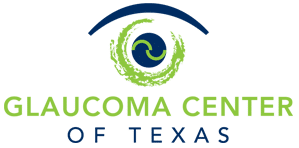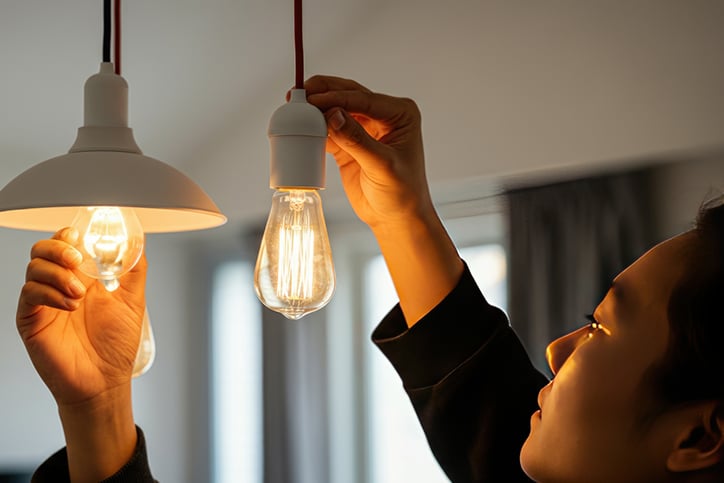Glaucoma is a progressive eye disease that damages the optic nerve, leading to vision loss over time. As the condition affects peripheral vision, people with glaucoma may find it more challenging to navigate their home environment safely. Making simple modifications to your living space can help minimize hazards and improve daily functioning. In this blog, the Glaucoma Center of Texas will explore a variety of glaucoma-friendly home modifications that can enhance safety and independence for those living with glaucoma.
1. Improve Lighting Throughout the Home
Proper lighting is essential for people with glaucoma, as it can be difficult to see clearly, especially in dimly lit environments. Poor lighting exacerbates vision loss, increasing the risk of trips and falls. Consider the following lighting adjustments:
- Use bright, evenly distributed lighting in all rooms. Avoid using harsh, direct lighting, as it can cause glare. Instead, opt for soft, diffuse lighting.
- Add task lighting in areas where you need more concentrated light, such as reading or cooking. Desk lamps, under-cabinet lighting, and adjustable floor lamps can help illuminate specific tasks.
- Install nightlights in hallways, bathrooms, and stairways to ensure visibility at night.
These lighting changes will help make the home feel brighter and safer, reducing the chances of accidents due to poor vision.
2. Reduce Clutter and Increase Open Space
Clutter can pose significant risks for those with glaucoma, as obstacles may be harder to spot with reduced peripheral vision. To create a safer environment, follow these tips:
- Keep walkways clear of objects like furniture, cords, and decorative items. Ensure that there’s ample space for walking without having to maneuver around obstacles.
- Use storage solutions like shelves or baskets to keep small items off the floor. This will prevent tripping hazards and create a more organized, accessible space.
- Remove loose rugs or mats that could slip or create uneven surfaces. If rugs are necessary, use non-slip backing to keep them in place.
By decluttering and organizing your home, you can significantly reduce the risk of falls and help ensure easier mobility.
3. High-Contrast Visual Cues
One of the challenges of glaucoma is difficulty seeing objects in low contrast, making it harder to distinguish between items or identify edges and boundaries. High-contrast visual cues can help:
- Label items with large, bold print. For example, labels on pantry items, medicines, or appliances can help people with glaucoma identify them more easily.
- Use contrasting colors for key items like door frames, light switches, and stairs. For example, paint stair edges with a bright color (such as yellow) to make them more visible.
- Choose contrasting patterns and colors for furniture, curtains, and bedding. This can help in distinguishing objects in the home, particularly in low-light conditions.
These adjustments will make it easier to identify important items and avoid accidental missteps.
4. Bathroom Modifications for Safety
Bathrooms can be particularly challenging due to slippery floors, sharp corners, and the risk of falls. Simple modifications can make the bathroom safer for someone with glaucoma:
- Install grab bars in the shower, next to the toilet, and near the sink to provide additional support and stability.
- Use non-slip mats or adhesive strips in the shower or bathtub to reduce the risk of slipping.
- Add a shower bench or a handheld showerhead for convenience and safety while bathing.
- Ensure the water temperature is consistent to avoid burns. Consider installing an anti-scald valve to regulate hot water.
These simple changes can make the bathroom more accessible and reduce the likelihood of accidents.
5. Smart Technology for Added Convenience
Incorporating smart home technology can improve safety and convenience for individuals with glaucoma:
- Voice-activated assistants like Amazon Alexa or Google Assistant can help control lights, thermostats, and even call for help in case of an emergency.
- Smart lighting systems that adjust based on movement or time of day can help ensure there’s always enough light where it’s needed.
- Smartphones and apps designed for visually impaired individuals can provide navigation assistance, identify objects, or even read text aloud.
These technologies offer added independence and make daily tasks more manageable.
6. Staircase and Hallway Modifications
Stairs and hallways can be a particular hazard, especially for those with limited peripheral vision. To make these areas safer:
- Ensure handrails are installed on both sides of the stairs to offer support while climbing or descending.
- Add brightly colored tape or paint along stair edges to improve visibility and alert individuals to step carefully.
- Consider a stairlift if climbing stairs is difficult. A stairlift can help individuals maintain their independence without risking falls.
These changes will improve safety and ease of movement in the most hazardous areas of the home.
Conclusion
Making a home more glaucoma-friendly doesn’t require an entire renovation. Simple modifications—like improving lighting, reducing clutter, adding high-contrast visuals, and installing safety features—can go a long way in promoting safety and independence for people living with glaucoma. The goal is to create an environment that supports daily activities and minimizes the risk of accidents. With these changes, individuals with glaucoma can continue to enjoy their homes while maintaining a greater sense of security and well-being.
For more on Glaucoma, visit the Glaucoma Center of Texas info page.

